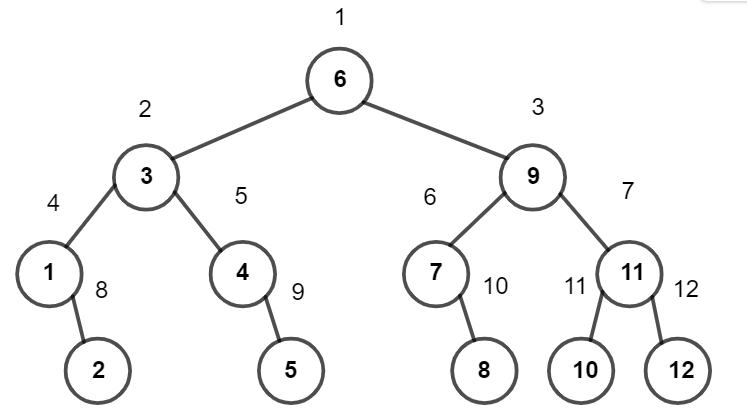103503A — Make Sum Great Again
Author: Gheal
It is always optimal to add the smallest integer which is not already in the array.
The number of operations will never exceed $$$\sqrt{2 \cdot s}.$$$
Based on the first hint, the final array will be equal to $$${v_1,v_1,\ldots, v_n} \cup [1,x]$$$, for some $$$x$$$.
Hint 4: How can we find the value of $$$x$$$ faster than $$$O(\sqrt{s})$$$?
Lemma: The number of operations will never exceed $$$\sqrt{2 \cdot s}$$$.
Since we need to maximize the final length of the array, it is always optimal to add the smallest integer which is not already present in $$$a$$$.
The naive implementation of this idea has a runtime complexity of $$$O(n \cdot \sqrt s)$$$, although this can be easily optimized to $$$O((n+ \sqrt s)log(n))$$$, if binary search is used to check whether the new elements are already present in $$$a$$$.
The optimal solution has a runtime complexity of $$$O(N log S)$$$. Based on hints $$$3$$$ and $$$4$$$, we can find the value of $$$x$$$ with binary search. For some $$$x$$$, the sum of the elements in $$$a$$$ will be equal to $$$sum(x)=\frac{x\cdot(x+1)}{2}+\sum_1 v_i$$$, where $$$\sum_1 v_i$$$ is the sum of the elements greater than $$$x$$$.
Since the sum of elements $$$sum(x)$$$ is a monotonous function, we can use binary search on the interval $$$[1,\sqrt{2 \cdot s}]$$$ to find the exact value of $$$x$$$.
Final time complexity: $$$O(N log S)$$$
103503B — Binary Search Search
Author: Gheal
The numbers are printed in ``layers''.
Try to represent the layers as a binary tree.
To better understand the solution, let's consider $$$n=12$$$. The final array is the BFS traversal starting from the root of the following binary tree:

This binary tree was generated by starting with the root $$$m=\lfloor \frac{n+1}{2} \rfloor=6$$$. Each node $$$m=\lfloor \frac{l+r}{2}\rfloor$$$ has up to two children: $$$m_1=\lfloor \frac{l+(m-1)}{2} \rfloor$$$ and $$$m_2=\lfloor \frac{r+(m+1)}{2} \rfloor$$$.
If our given integer $$$k$$$ is in a complete layer, then we can employ a binary search-type algorithm to find the position of $$$k$$$:
l = 1, r = n, position = 1, visited_nodes = 1
while(visited_nodes<=n){
m = (l + r) / 2
if(k==m){
print position
return
}
if(k<m) position = position * 2
else position = position * 2 + 1
visited_nodes = visited_nodes * 2 + 1
}
This algorithm has the added benefit of not printing anything if $$$k$$$ is not in a complete layer. In this case, the position of $$$k$$$ in the last layer can be determined from $$$position$$$, although this isn't very straightforward. If the binary tree were complete, then the position of $$$k$$$ in the last layer would be $$$position-\frac{\text{visited_nodes}-1}{2}$$$, since there are $$$\frac{\text{visited_nodes}-1}{2}$$$ nodes on the other layers, all of which will be printed before $$$k$$$.
By looking at the missing nodes from the binary tree for $$$n=12$$$, one may make the crucial observation that the general case position for $$$k$$$ in the last layer is equal to $$$k-(position-\frac{\text{visited_nodes}-1}{2})$$$.
In conclusion, the final position for $$$k$$$ will be $$$k-(position-\frac{\text{visited_nodes}-1}{2})+\frac{\text{visited_nodes}-1}{2}=k+\text{visited_nodes}-position-1$$$.
Time complexity per testcase: $$$O(log n)$$$
103503C — Plates
Author: Gheal
Any final configuration can be uniquely determined by a permutation of $$${1,2,3,\ldots, k}$$$
$$$k \le 20$$$
Let dp[mask] be the minimum number of moves required to cover the first $$$\Sigma_{i=1}^k getBit(mask,i)*p_i$$$ slots with all plates of colours $$$c_1,c_2,\ldots$$$ where $$$getBit(mask,c_i)=1, \forall i$$$. Naturally, $$$dp[0]=0$$$.
Transitioning from $$$dp[mask]$$$ to $$$dp[mask+2^k]$$$, where $$$getBit(mask,k)=0$$$ can be done fairly easily. Let $$$pos=\Sigma_{i=1}^k getBit(mask,i)*p_i$$$ and $$$cntdiff(l,r,k)$$$ be the number of plates in the initial configuration $$$a_i$$$ which satisfy the following requirements:
- $$$l \le i \le r$$$;
- $$$a_i \neq 0$$$;
- $$$a_i \neq k$$$.
From these definitions, the value of $$$dp[mask+2^k]$$$ can be computed using the following formula:
$$$cntdiff(l,r,k)$$$ can be calculated in $$$O(1)$$$ per query using prefix sums. Calculating the prefix sums has a time complexity of $$$O(n \cdot k)$$$.
Intended time complexity: $$$O(n\cdot k + 2^k \cdot k)$$$
Reconstructing the final configuration will also require an auxiliary array $$$prev[mask]$$$ — the last colour added to $$$mask$$$.





